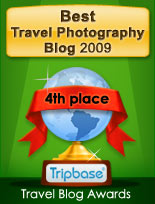 Photo © Tewfic El-Sawy -All Rights Reserved
Photo © Tewfic El-Sawy -All Rights ReservedI deem this typical street scene to be a decisive moment kind of photograph. I thought that Hassan, the Berber storekeeper, was about to get the playing children's bicycle wheel in the shins, but it missed him by a whisker. One of the very few that I met in the medina who was relatively amenable to being photographed, Hassan's dry wit and no-nonsense approach to life, along with eyes rimmed with
kohl, and a couple of missing teeth, brings quite a number of buyers to his souvenir shop.
 Photo © Tewfic El-Sawy -All Rights Reserved
Photo © Tewfic El-Sawy -All Rights ReservedHere's a juxtaposition of traditional and antique mirrors for sale in the
medina. Larry Larsen, one of the photo~expedition's members, wearing his Panama hat is visible in the mirror on the top right.
 Photo © Tewfic El-Sawy -All Rights Reserved
Photo © Tewfic El-Sawy -All Rights ReservedHere's a street life photograph, in which the store keeper is asleep next to his wares. Not an unusal sight in the labyrinthine alleys of the
medina, where stores are open till very late at night.
I recall a scene, which I haven't dared photograph, of four or five of men, who in a deferential nod to the police, were seated in a side alley smoking
kif, otherwise known as cannabis or
hashish frequently smoked in the Maghreb. I spent a few minutes discussing soccer with them, and while one was seriously stoned, the others were lucid, friendly and unconcerned. It seems that
kif is viewed as a recreational substance among some in Moroccan society.
The bottom line is that photographing people and street scenes in Morocco is extremely difficult. One can either photograph from the hip, or surreptitiously and very quickly. The usual street photography techniques also apply. One has to be infinitely patient, try to blend in (or at least wait until people get tired of you) and have a sense of humor. Finally having a lot of dirham coins helps if caught.
I normally carry my main camera using a Black-Rapid strap which, in the Moroccan streets, hasn't work well for me. Whipping the camera up to my face is as noticeable (and possibly threatening) as Clint Eastwood flipping his poncho and revealing his .44 caliber six-shooter in The Good, The Bad, The Ugly. Dangling it tourist-like from my chest wasn't an option, so I resorted to carrying it in my right hand secured by small strap. It wasn't too comfortable but it sure beat the alternatives.






















